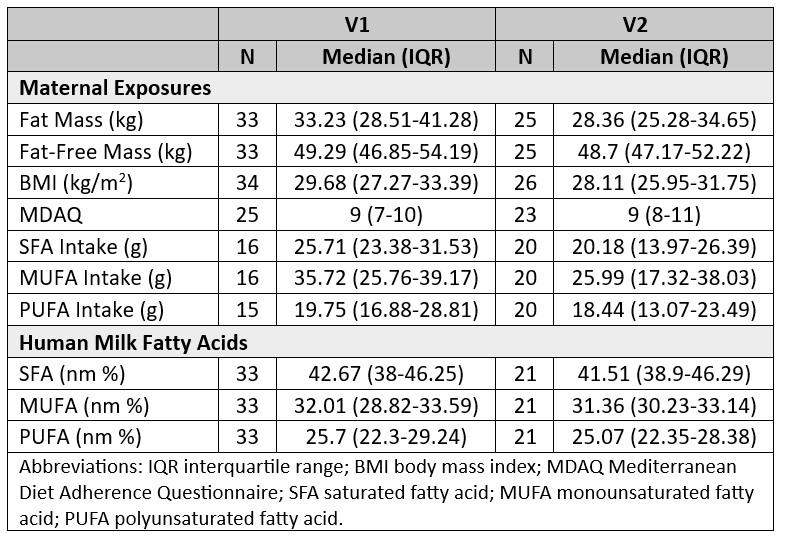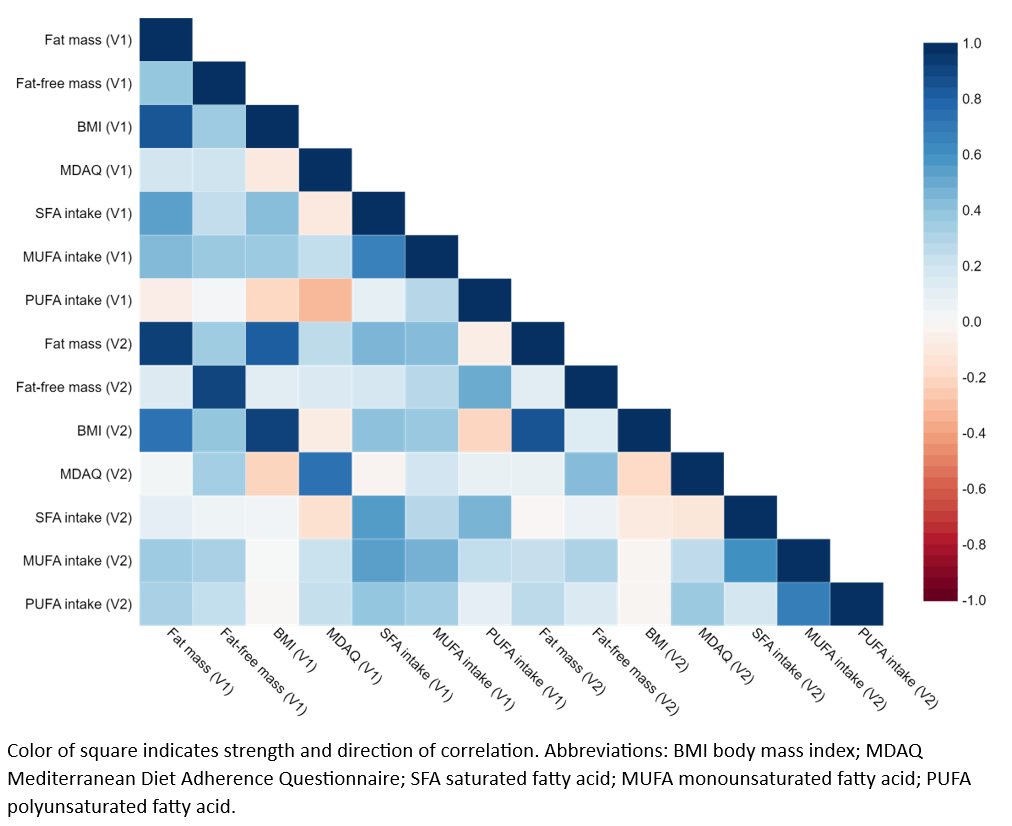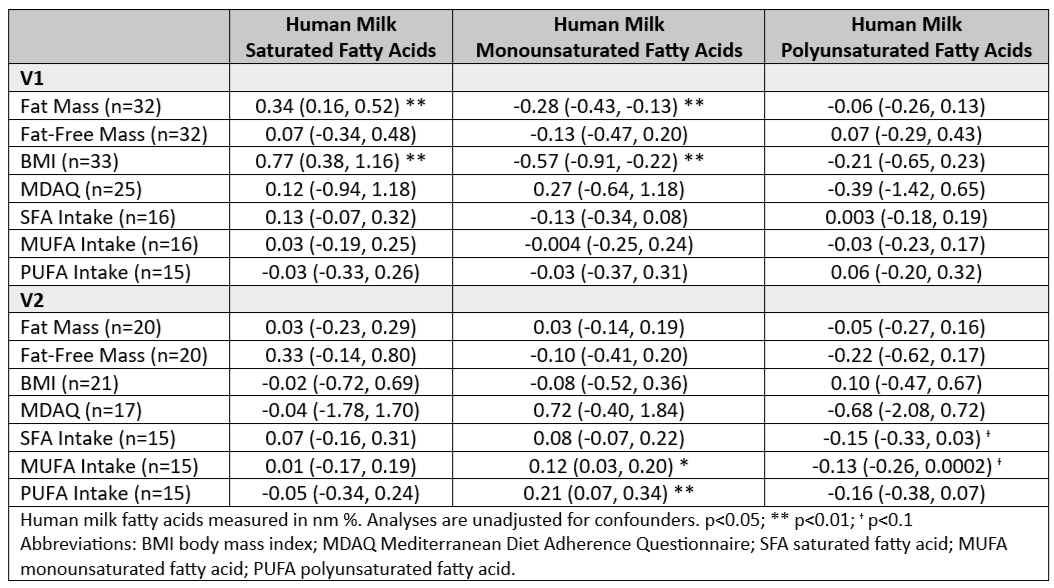Breastfeeding/Human Milk
Session: Breastfeeding/Human Milk 3: Milk Composition
502 - Associations of Maternal Body Composition and Diet with Human Milk Fatty Acids
Sunday, May 5, 2024
3:30 PM - 6:00 PM ET
Poster Number: 502
Publication Number: 502.2109
Publication Number: 502.2109

Chloe Andrews, MS, RD (she/her/hers)
Project Manager/PhD Student
Women & Infants Hospital
Boston, Massachusetts, United States
Presenting Author(s)
Background: Children of mothers with overweight and obesity are at higher risk for obesity themselves. Composition of human milk (HM) has been associated with growth in infancy; however, little is known on modifiable maternal predictors of HM fatty acid (FA) composition to inform interventions.
Objective: To determine the associations of maternal body composition, Mediterranean Diet Adherence Questionnaire (MDAQ) scores, and dietary FA intake with HM FAs.
Design/Methods: This is a secondary analysis of a sub-cohort from the Lifestyle Intervention in Preparation for Pregnancy randomized controlled trial. Healthy women with overweight or class I obesity were randomized to a diet and exercise intervention with olive oil provision during the interpregnancy interval. At 3 (V1, baseline) and 6 (V2) months postpartum, we assessed maternal fat mass (FM) and fat-free mass (FFM) with air displacement plethysmography; body mass index (BMI); dietary quality with the MDAQ; and total saturated (SFA), monounsaturated (MUFA), and polyunsaturated (PUFA) FA intake with a 24-hour dietary recall. At each visit, HM samples were collected as an aliquot of a full breast expression and HM FAs were quantified with gas chromatography/mass spectrometry. We used unadjusted linear regression to determine associations of maternal predictors and HM FA composition.
Results: Median (IQR) maternal age was 32 (31-35) years, and most participants were White (82%), college educated (65%), and delivered vaginally (82%). At V1, higher maternal FM and BMI were significantly associated with higher HM SFAs (FM: β 0.34, 95% confidence interval (CI) 0.16, 0.52; BMI: β 0.77, 95% CI 0.38, 1.16) and lower HM MUFAs (FM: β -0.28, 95% CI -0.43, -0.13; BMI: β -0.57, 95% CI -0.91, -0.22). At V2, higher MUFA and PUFA intake were associated with higher HM MUFAs (MUFA intake: β 0.12, 95% CI 0.03, 0.20; PUFA intake: β 0.21, 95% CI 0.07, 0.34) (Table 2). Among predictors, maternal FM and BMI at V1 (ρ=0.86; p< 0.01) and PUFA and MUFA intake at V2 (ρ=0.69; p< 0.01) were positively correlated (Figure 1).
Conclusion(s): Maternal FM and lipid component of diet are interrelated, critical, and modifiable drivers of HM FA composition, and may present an opportunity to interrupt intergenerational obesity. The role of HM composition as a mediator of infant growth in this cohort is currently being assessed.



